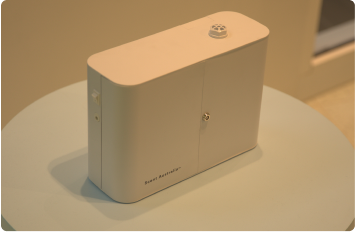Good restaurants are already full of pleasing aromas—sizzling steaks, fresh-baked bread, an open bottle of merlot, one could go on—so how could ambient-scenting possibly play a role? Generally speaking, the natural ability of food and beverage items to produce pleasing smells means that, from an olfactory perspective, it’s a good idea to leave the main dining room and kitchen alone.
Many restaurants do include some areas that are separate from the restaurant and that could benefit from a subtle—and subtle is the operative word—enhancement.
Let’s say you operate a steakhouse with a separate bar decorated in dark wood and leather that has a classic ambience. Delivered via scent-diffusion technology, the light fragrance of whiskey and tobacco could set just the right tone. Likewise, for a space named “The Rose Room,” a subtle floral fragrance could work perfectly.
All of us prefer pleasant-smelling places, and research has proven that we tend to associate scents with specific locations, products and experiences. Have you ever smelled something from your childhood and then experienced a flood of memories? We form lasting impressions via the olfactory dimension, which is why so many retailers, hotels, resorts and other businesses embrace ambient-scenting.
Restaurants, too, can use this technology to better-connect with customers. However, there’s a flipside to the power of smell: Studies also show that when you experience a malodor somewhere, you never want to go back. Smell and cleanliness are closely associated. A foul-smelling restroom will come across as “dirty” to those who experience it. According to a poll by research firm Harris, 86 percent of the U.S. adults it surveyed viewed the cleanliness of a restaurant’s restroom as being one-and-the-same as the cleanliness of its kitchen.
And most restaurants have a strategic imperative to neutralize malodors in places such as the restrooms or back door areas where employees smoke, empty trash into dumpsters, pour used cooking oil into grease traps, etc. Often these areas are near enough to the public dining areas to enable malodors to waft inside.
Many restaurant operators try to get rid of these types of malodors by overpowering them with inefficient aerosol sprays, “plug-in” type air fresheners and the like. These old-school technologies are problematic. Armed with a can of aerosol spray, a heavy-handed customer or employee can actually detract from the experience of diners—particularly the more sensitive ones—by spraying way too much fragrance in one area. This happens, in part, because of allergens and/or harmful volatile organic compounds that can be found in many of these products. Additionally, from an operations standpoint, employees often neglect to refill empty fragrance dispensers or replace worn-out ones.
By contrast, more advanced ambient-scenting technologies give restaurant owners the ability to turn the “volume” of a fragrance effect up or down with precision via computer controls. They provide the ability to neutralize malodors at the molecular level rather than trying to strong-arm them into submission.
Among the technologies on the market, Scent Australia scent diffuser can create a Ambient Scenting by using fine French fragrances that will not only eliminate bad odours bu tcreate a pleasant atmosphere for guests who will be able to relax and enjoy their time spent there.
Micro-droplet technology—droplets that are much smaller than the diameter of a human hair and can float like clouds as a result—make it possible for these devices to provide a consistent and uniform scent effect, unlike old-school technologies. Micro-droplets also translate into ultra-low concentrations of air-treatment agents (typically less than one part per million) used to treat the space. No gunky residues, in other words.
Modern Restaurant Management.









 Brian Clark
Brian Clark










